
Flying through American airports can sometimes feel like navigating a small city, complete with its own traffic jams, food courts that rival shopping malls, and enough walking to qualify as a cardio workout.
With millions of passengers shuffling through terminals annually, as per OAG, these 10 aviation hubs have become the unsung heroes of modern travel, connecting dreamers to destinations and business travellers to their next coffee-fueled meeting.
Busiest Airports in the US
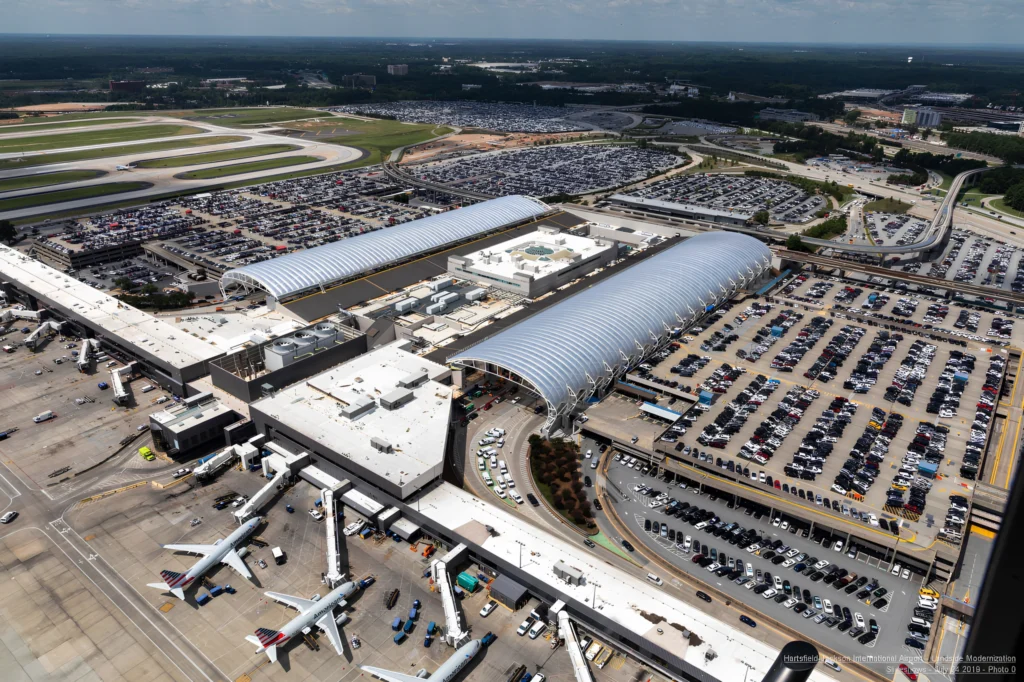 Photo: Atlanta International Airport
Photo: Atlanta International Airport1. Atlanta Hartsfield-Jackson International Airport (ATL)
The undisputed champion of American aviation, Atlanta Hartsfield-Jackson International Airport (ATL), maintains its throne as the busiest airport in the United States.
With an impressive 38.0 million seats available during summer 2025, ATL has managed to increase its capacity by 2% compared to the previous year.
This Georgia giant sits comfortably ahead of its nearest competitor by approximately seven million seats, demonstrating why it consistently ranks among the world’s busiest airports.
The facility serves as a major hub for Delta Air Lines (DL), handling both domestic and international traffic with remarkable efficiency. Its strategic location makes it a natural connecting point for travellers crossing the country, while its extensive runway system ensures smooth operations despite the massive volume of daily flights.
2. Chicago O’Hare International Airport (ORD)
 Chicago O’Hare Airport; Photo: Foster Epstein Moreno
Chicago O’Hare Airport; Photo: Foster Epstein MorenoSecuring second place with 31.3 million seats, Chicago O’Hare International Airport (ORD) has experienced significant growth, showing a 9% increase in capacity compared to summer 2024.
This Illinois powerhouse serves as a crucial hub for both United Airlines (UA) and American Airlines (AA), with these carriers driving substantial expansion in domestic operations.
United has boosted its domestic seat capacity by 9%, while American Airlines (AA) has implemented an impressive 20% increase.
O’Hare’s position as a central connecting point for travellers moving between the East and West coasts contributes to its consistently high passenger volumes. The airport’s ongoing modernisation efforts and terminal improvements continue to enhance the passenger experience while accommodating growing demand.
3. Dallas-Fort Worth International Airport (DFW)
 Photo: Dallas International Airport (DFW)
Photo: Dallas International Airport (DFW)Claiming third position with 30.7 million seats, Dallas-Fort Worth International Airport (DFW) represents one of the largest airport complexes in the world by land area. This Texas titan serves as American Airlines’ primary hub and plays a vital role in connecting passengers throughout the Americas.
DFW’s strategic location in the heart of the United States makes it an ideal stopover point for transcontinental flights, while its proximity to major business centres drives significant corporate travel demand.
The airport’s five terminals and seven runways enable efficient operations despite handling millions of passengers annually. Its reputation for reliable operations and extensive flight network has made it a preferred choice for both airlines and travellers.
4. Denver International Airport (DEN)
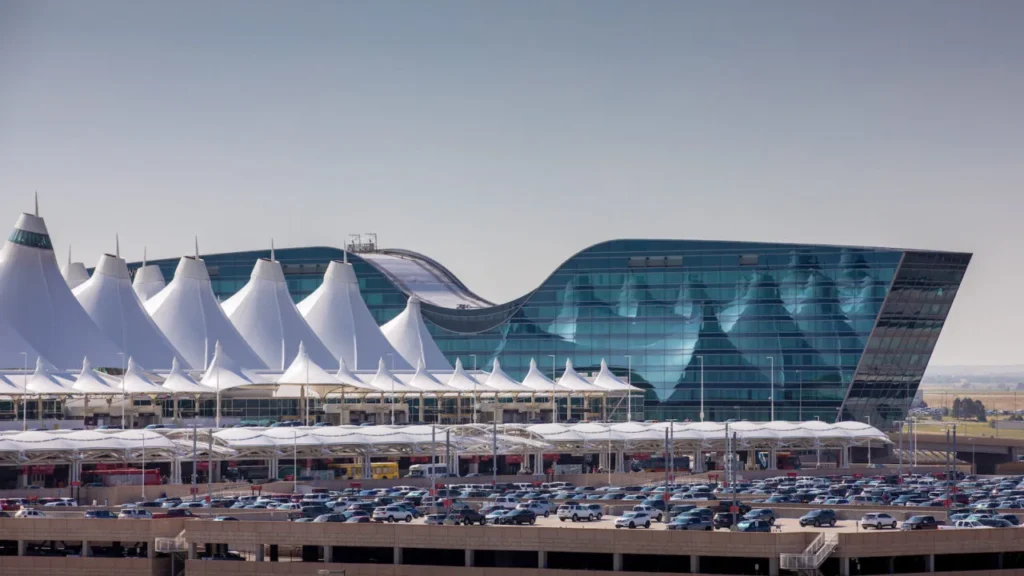 Photo: Denver International Airport
Photo: Denver International AirportFourth on the list with 29,727,333 seats, Denver International Airport (DEN) stands out not only for its passenger volume but also for its distinctive architecture and high-altitude location.
Known for its peaked terminal roof that resembles the Rocky Mountains, DEN serves as United Airlines’ western hub and provides crucial connectivity for travellers heading to mountain destinations.
The airport’s elevation of 5,431 feet presents unique operational challenges that the facility manages expertly. Denver’s growing population and thriving business sector contribute to steady passenger growth, while the airport’s expansion projects continue to enhance capacity and passenger amenities.
5. Los Angeles International Airport (LAX)
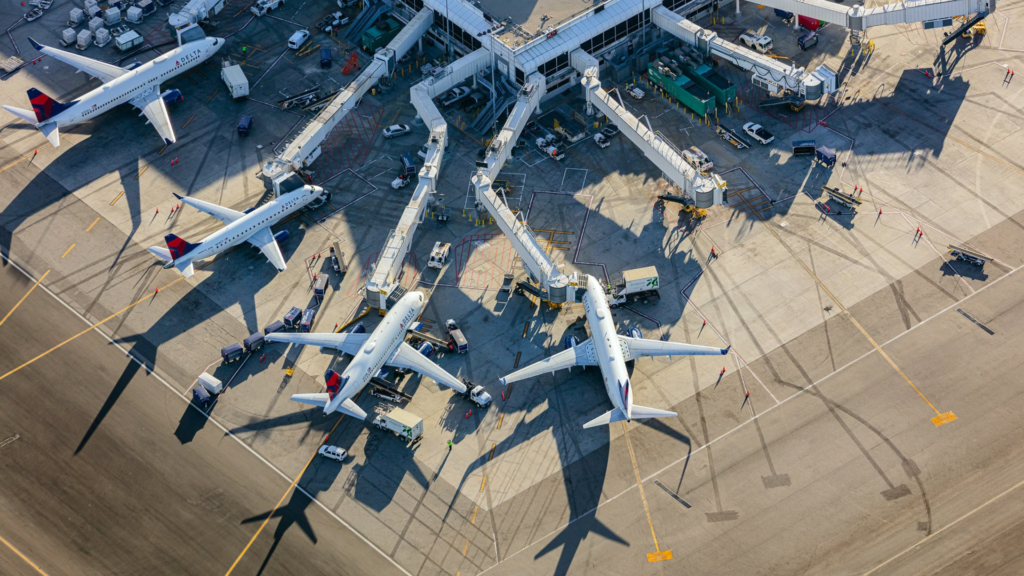 Los Angeles Airport; Photo: Anglas | Goodcon.com
Los Angeles Airport; Photo: Anglas | Goodcon.comRanking fifth with 27,065,245 seats, Los Angeles International Airport (LAX) serves as the primary gateway to the Pacific Rim and a crucial entry point for international travellers visiting the West Coast.
LAX handles more international passengers than most other American airports, reflecting Los Angeles’ status as a global city and entertainment capital.
The airport’s ongoing modernisation program, including new terminals and improved transportation connections, aims to enhance the passenger experience while accommodating growing demand.
Its proximity to Hollywood, major business districts, and popular tourist destinations ensures consistent high traffic volumes throughout the year.
6. New York John F. Kennedy International Airport (JFK)
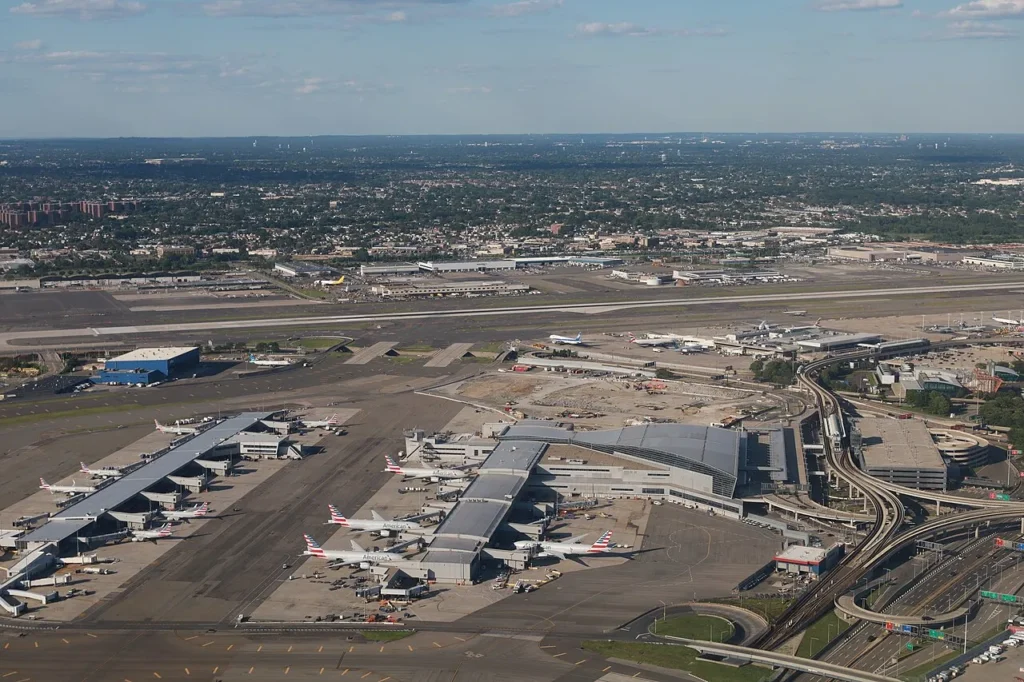 JFK Airport; Photo- Wikipedia
JFK Airport; Photo- WikipediaSixth place belongs to John F. Kennedy International Airport (JFK) with 23,559,605 seats, serving as New York’s primary international gateway. JFK’s role as a major entry point for transatlantic flights makes it one of America’s most important international airports.
The facility’s multiple terminals serve numerous international carriers, connecting New York to destinations across Europe, Asia, and beyond.
Despite facing capacity constraints due to its urban location, JFK continues to play a vital role in international commerce and tourism. Recent infrastructure improvements and planned expansions aim to modernise facilities while maintaining its status as a premier international hub.
7. Las Vegas Harry Reid International Airport (LAS)
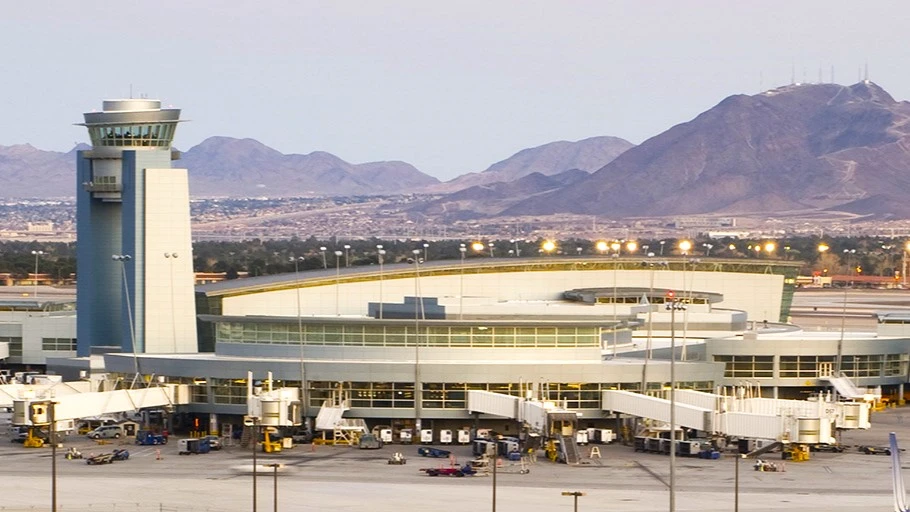 Photo: Harry Reid International Airport
Photo: Harry Reid International AirportSeventh on the list with 20,276,586 seats, Las Vegas Harry Reid International Airport (LAS) benefits from the city’s status as a premier entertainment and convention destination.
The airport experiences unique traffic patterns, with significant leisure travel peaks during weekends and major events. Its proximity to the famous Las Vegas Strip makes it a convenient entry point for millions of tourists annually.
The facility efficiently handles the challenge of accommodating large groups of leisure travellers while maintaining smooth operations.
Recent terminal improvements and expanded amenities have enhanced the passenger experience for visitors beginning or ending their Las Vegas adventures.
8. Charlotte Douglas International Airport (CLT)
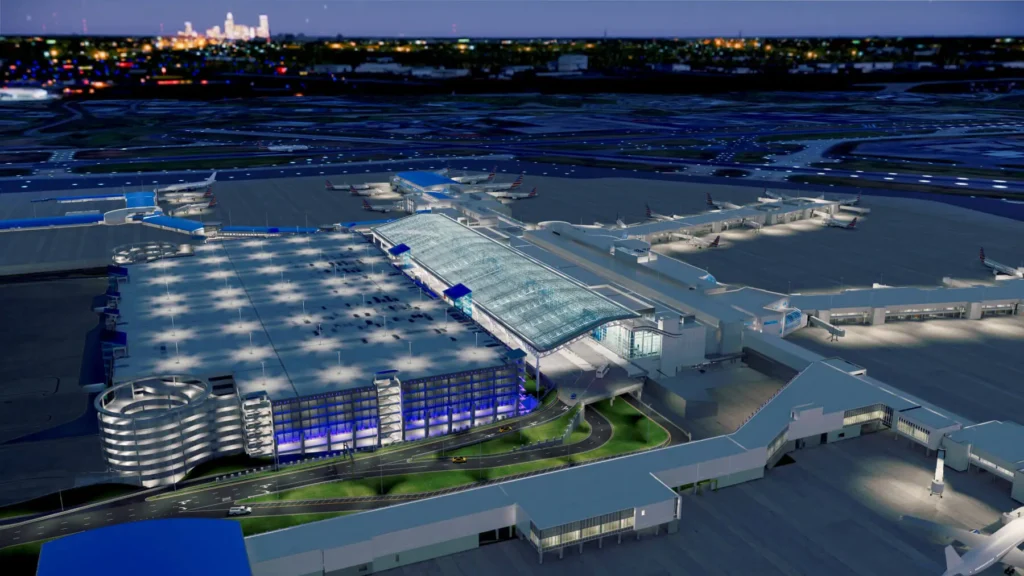 Charlotte International Airport Terminal; Photo: Gresham Smith
Charlotte International Airport Terminal; Photo: Gresham SmithClaiming eighth position with 20,063,771 seats, Charlotte Douglas International Airport (CLT) serves as American Airlines’ second-largest hub after Dallas-Fort Worth (DFW).
This North Carolina facility has experienced tremendous growth over the past decade, transforming from a regional airport into a major national hub.
CLT’s strategic location on the East Coast makes it an ideal connecting point for flights throughout the eastern United States and to international destinations. The airport’s efficient operations and continued expansion have enabled it to handle increasing passenger volumes while maintaining high service standards.
9. San Francisco International Airport (SFO)
 San Francisco Airport; Photo: Wally Gobetz | Flickr
San Francisco Airport; Photo: Wally Gobetz | FlickrNinth place goes to San Francisco International Airport (SFO) with 19,623,701 seats, serving as a major gateway to Asia and the Pacific. SFO’s location in the heart of Silicon Valley drives significant business travel, while the San Francisco Bay Area’s attractions generate substantial leisure traffic.
The airport’s reputation for innovation extends beyond its technology industry connections, with progressive environmental initiatives and cutting-edge terminal designs.
Despite challenging weather conditions that can affect operations, SFO maintains its position as one of America’s premier international airports.
10. Seattle-Tacoma International Airport (SEA)
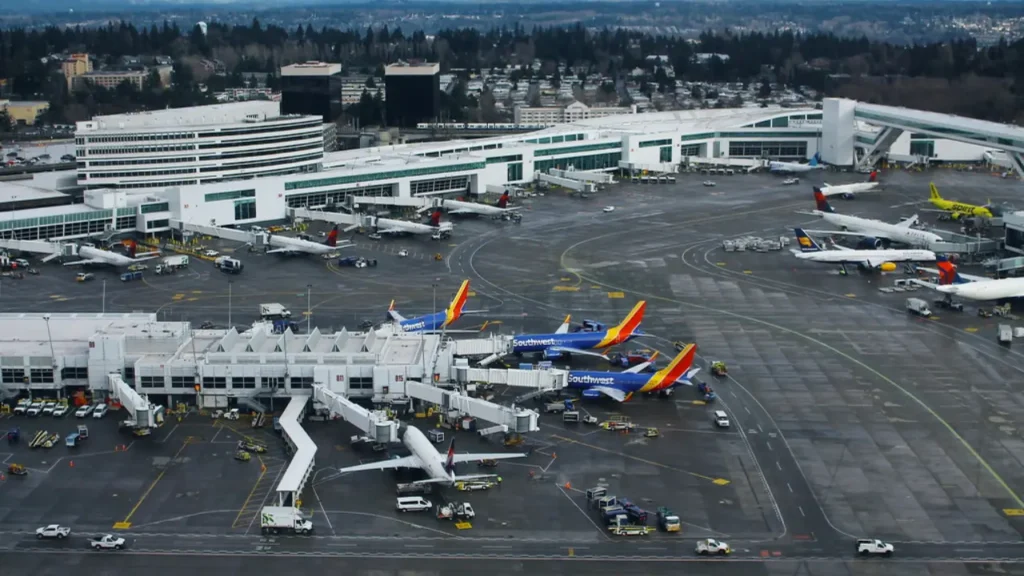 Photo: Sea-Tac Airport Terminals A and B Aerial | formulanone | Flickr
Photo: Sea-Tac Airport Terminals A and B Aerial | formulanone | FlickrRounding out the top ten with 19,618,526 seats, Seattle-Tacoma International Airport (SEA) serves the Pacific Northwest and acts as a crucial gateway to Asia. The airport benefits from Seattle’s thriving technology sector and its role as a major port city.
SEA’s continued growth reflects the region’s economic expansion and increasing international connectivity. The facility’s ongoing development projects aim to accommodate growing passenger demand while maintaining operational efficiency.
Bottom Line
These 10 aviation powerhouses collectively handle 35% of all capacity across America’s 672 airports with scheduled services, proving that in the world of air travel, size definitely matters.
While Atlanta (ATL) continues its reign as the undisputed king of American airports, each facility on this list plays a crucial role in keeping the nation connected and mobile.
From business travellers racing to catch connecting flights to vacation-bound families beginning their adventures, these airports serve as the essential gateways that make modern travel possible, even if finding a decent cup of coffee at 6 AM remains an ongoing challenge.
Stay tuned with us. Further, follow us on social media for the latest updates.
Join us on Telegram Group for the Latest Aviation Updates. Subsequently, follow us on Google News
Busiest Airports in the World 2024, No. 7 Will Surprise You
The post Top 10 Busiest Airports in the US in 2025, No.7 Will Surprise You appeared first on Aviation A2Z.













